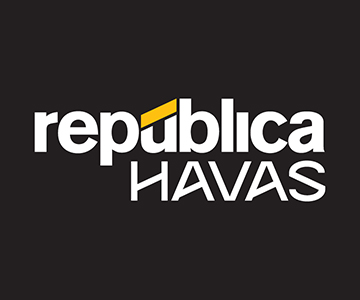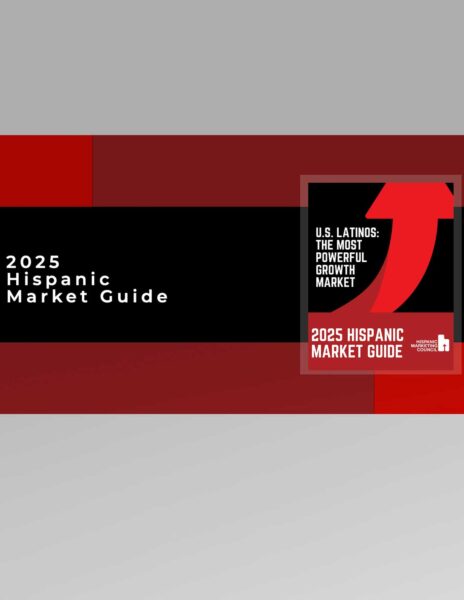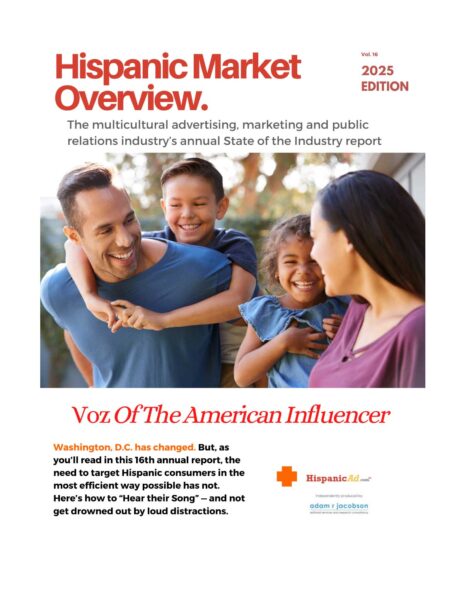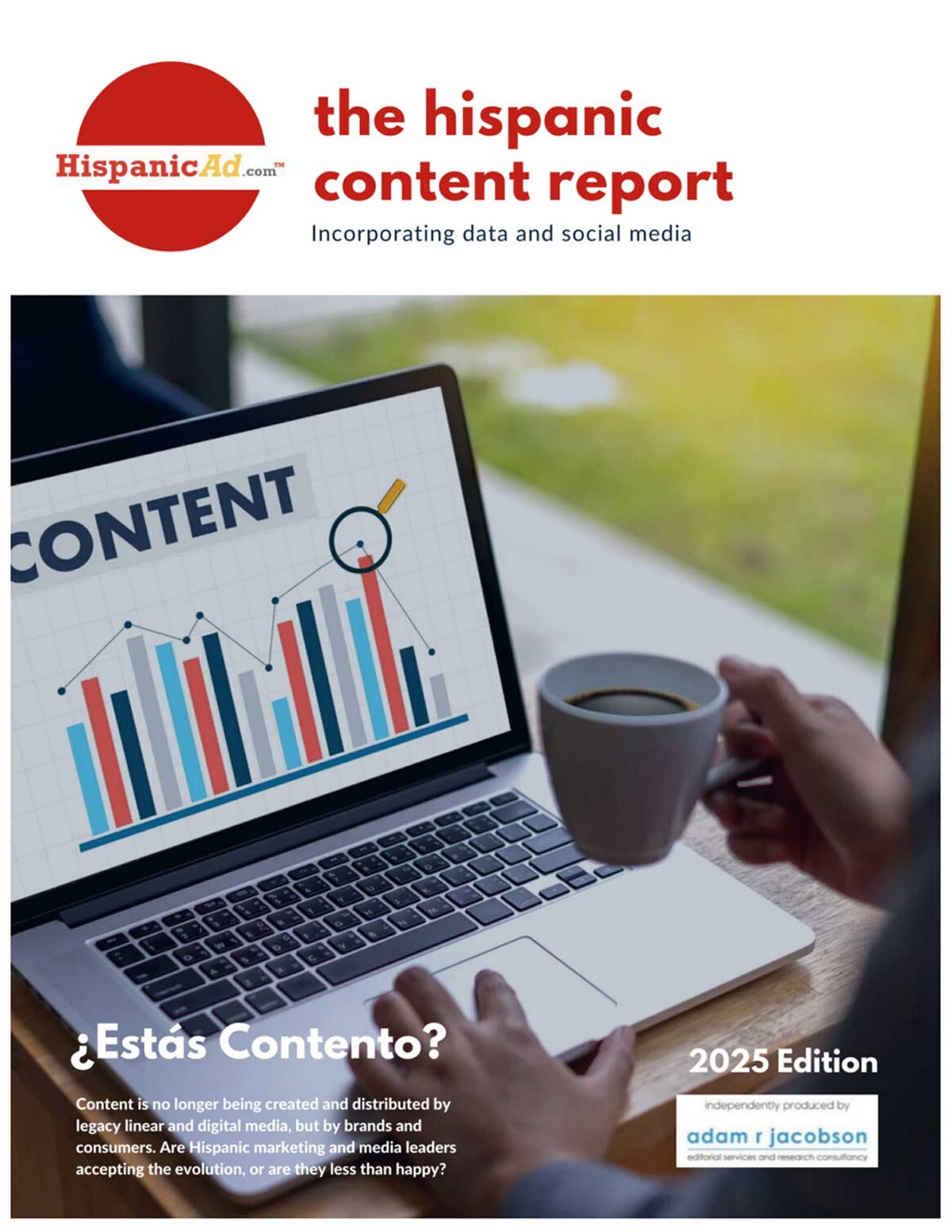 HispanicAd.com has an open invitation to members of our industry that wish to submit commentary with observations on the state of Hispanic advertising during this new normal. In his most recent contribution to HispanicAd.com, Louis Maldonado, partner and Managing Director of d expósito & Partners, a leading communications firm in the ad industry, offers an opinion piece on COVID-19 and its impact on the U.S. Hispanic market. His commentary offers advice on how brands should behave with regard to the U.S. Hispanic market during this global pandemic, framed within the context of “Love in the Time of Cholera,” by Nobel Laureate, Gabriel García Márquez, for added relevance to today’s times.
HispanicAd.com has an open invitation to members of our industry that wish to submit commentary with observations on the state of Hispanic advertising during this new normal. In his most recent contribution to HispanicAd.com, Louis Maldonado, partner and Managing Director of d expósito & Partners, a leading communications firm in the ad industry, offers an opinion piece on COVID-19 and its impact on the U.S. Hispanic market. His commentary offers advice on how brands should behave with regard to the U.S. Hispanic market during this global pandemic, framed within the context of “Love in the Time of Cholera,” by Nobel Laureate, Gabriel García Márquez, for added relevance to today’s times.
 The Culture Lab, a think tank of member agency Alma in Coconut Grove, Fla., has released its Quarterly Cultural Digest with its first look at the impact of the coronavirus pandemic on multicultural consumer groups in the U.S.
The Culture Lab, a think tank of member agency Alma in Coconut Grove, Fla., has released its Quarterly Cultural Digest with its first look at the impact of the coronavirus pandemic on multicultural consumer groups in the U.S.

 As the media and advertising community is buffeted by the negative impact of COVID-19, secular economic realities will remain a concern for legacy media categories well beyond their near-term issues. Among 28 marketing communications categories, only 12 are projected to generate growth in the first half of this decade and only three of the 12 can be categorized as legacy media: broadcast syndication, Hispanic media, and cinema advertising.
As the media and advertising community is buffeted by the negative impact of COVID-19, secular economic realities will remain a concern for legacy media categories well beyond their near-term issues. Among 28 marketing communications categories, only 12 are projected to generate growth in the first half of this decade and only three of the 12 can be categorized as legacy media: broadcast syndication, Hispanic media, and cinema advertising. HispanicAd.com has an open invitation to members of our industry that wish to submit commentary with observations on the state of Hispanic advertising during this new normal. In his most recent contribution to HispanicAd.com, Louis Maldonado, partner and Managing Director of d expósito & Partners, a leading communications firm in the ad industry, offers an opinion piece on COVID-19 and its impact on the U.S. Hispanic market. His commentary offers advice on how brands should behave with regard to the U.S. Hispanic market during this global pandemic, framed within the context of “Love in the Time of Cholera,” by Nobel Laureate, Gabriel García Márquez, for added relevance to today’s times.
HispanicAd.com has an open invitation to members of our industry that wish to submit commentary with observations on the state of Hispanic advertising during this new normal. In his most recent contribution to HispanicAd.com, Louis Maldonado, partner and Managing Director of d expósito & Partners, a leading communications firm in the ad industry, offers an opinion piece on COVID-19 and its impact on the U.S. Hispanic market. His commentary offers advice on how brands should behave with regard to the U.S. Hispanic market during this global pandemic, framed within the context of “Love in the Time of Cholera,” by Nobel Laureate, Gabriel García Márquez, for added relevance to today’s times.
 No one knows what the next few months will bring. Right now, much of what we once took for granted seems uncertain. But whatever happens in the months ahead, there will come a time of improved stability and recovery to a new normal. And because brands are built over the long-term, marketers will need to plan for when people can once again travel, shop and congregate without fear. by Nigel Hollis
No one knows what the next few months will bring. Right now, much of what we once took for granted seems uncertain. But whatever happens in the months ahead, there will come a time of improved stability and recovery to a new normal. And because brands are built over the long-term, marketers will need to plan for when people can once again travel, shop and congregate without fear. by Nigel Hollis As the pandemic spreads, so do the economic implications. Here’s what’s happening
As the pandemic spreads, so do the economic implications. Here’s what’s happening Staying put is what’s best for reducing the spread of the coronavirus (COVID-19), but home-bound consumers are having an immediate impact on brands. The pull-back on advertising spend will cut expenses in the short term but will affect a brand’s resilience. How can businesses support their brands and make money in such uncharted waters?
Staying put is what’s best for reducing the spread of the coronavirus (COVID-19), but home-bound consumers are having an immediate impact on brands. The pull-back on advertising spend will cut expenses in the short term but will affect a brand’s resilience. How can businesses support their brands and make money in such uncharted waters? New research released by GroupM, WPP’s media investment group, offers important insights for marketers about consumer attitudes toward digital marketing.
New research released by GroupM, WPP’s media investment group, offers important insights for marketers about consumer attitudes toward digital marketing. Ample research shows that leadership makes the greatest difference when the world around us is uncertain, and we are unsure about what lies ahead. We also know that the impact will be greatest when it comes not only from the apex but also from the middle ranks and front lines, writes Michael Useem in this opinion piece. Useem is faculty director of the Leadership Center and McNulty Leadership Program at the Wharton School of the University of Pennsylvania, and author of books on leadership during crisis.
Ample research shows that leadership makes the greatest difference when the world around us is uncertain, and we are unsure about what lies ahead. We also know that the impact will be greatest when it comes not only from the apex but also from the middle ranks and front lines, writes Michael Useem in this opinion piece. Useem is faculty director of the Leadership Center and McNulty Leadership Program at the Wharton School of the University of Pennsylvania, and author of books on leadership during crisis. A Make Or Break MomentWhat does coronavirus mean for brands on social media?The coronavirus pandemic represents unchartered territory for businesses. Companies are being challenged on multiple levels with consumers asking questions not just about their advertising, but also about their core values, how they treat their employees and factory workers, and how they’re contributing to the cause.
A Make Or Break MomentWhat does coronavirus mean for brands on social media?The coronavirus pandemic represents unchartered territory for businesses. Companies are being challenged on multiple levels with consumers asking questions not just about their advertising, but also about their core values, how they treat their employees and factory workers, and how they’re contributing to the cause. “For some organizations, near-term survival is the only agenda item. Others are peering through the fog of uncertainty, thinking about how to position themselves once the crisis has passed and things return to normal. The question is, ‘What will normal look like?’ While no one can say how long the crisis will last, what we find on the other side will not look like the normal of recent years.”
“For some organizations, near-term survival is the only agenda item. Others are peering through the fog of uncertainty, thinking about how to position themselves once the crisis has passed and things return to normal. The question is, ‘What will normal look like?’ While no one can say how long the crisis will last, what we find on the other side will not look like the normal of recent years.” “Where were you when Selena died?” By Court Stroud
“Where were you when Selena died?” By Court Stroud Many industry sectors may decrease marketing and advertising spending this year as a result of slower sales and profits. MAGNA expects the impact on revenues to be severe for the Travel and Restaurant industries, moderate for Retail and Automotive, mild for Consumer PackagedGoods (CPG/FMCG) and potentially positive for Ecommerce and Home Entertainment (SVOD).
Many industry sectors may decrease marketing and advertising spending this year as a result of slower sales and profits. MAGNA expects the impact on revenues to be severe for the Travel and Restaurant industries, moderate for Retail and Automotive, mild for Consumer PackagedGoods (CPG/FMCG) and potentially positive for Ecommerce and Home Entertainment (SVOD). New CMO Council Research Finds Marketers Lacking On-demand Data Insights to Adapt, Adjust and Make Tactical and Strategic Marketing Recovery Moves
New CMO Council Research Finds Marketers Lacking On-demand Data Insights to Adapt, Adjust and Make Tactical and Strategic Marketing Recovery Moves The decades long tracker we’ve been running? Weakened. Longitudinal data relies on consistency, the assumption that external factors change only slight over time. COVID-19 has proven to be a global catastrophe, changing our daily lives in ways we could have never anticipated from the decimation of global supply chains to the way we interact with each other on a daily basis. Trackers prior to the COVID-19 outbreak will serve as reminders of how life was prior, but new data will be needed to anticipate how consumer purchase behaviors have changed in light of the pandemic. By Mario Xavier Carrasco – Co-Founder & Principal at ThinkNow
The decades long tracker we’ve been running? Weakened. Longitudinal data relies on consistency, the assumption that external factors change only slight over time. COVID-19 has proven to be a global catastrophe, changing our daily lives in ways we could have never anticipated from the decimation of global supply chains to the way we interact with each other on a daily basis. Trackers prior to the COVID-19 outbreak will serve as reminders of how life was prior, but new data will be needed to anticipate how consumer purchase behaviors have changed in light of the pandemic. By Mario Xavier Carrasco – Co-Founder & Principal at ThinkNow
























